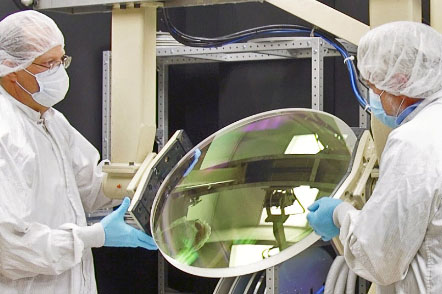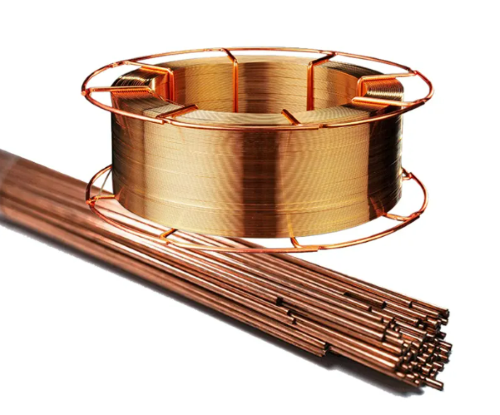How Nano-TiO2 is used in Pulping and Papermaking Industry?
Introduction
In the dynamic realm of the pulping and papermaking industry, innovation takes center stage with the transformative presence of Nano-titanium dioxide, or Nano-TiO2. Stanford Advanced Materials, a trailblazer in materials innovation, embraces the potential of this nanomaterial, steering the industry toward a future where efficiency and environmental responsibility harmoniously converge.
Nano-TiO2, derived from the naturally occurring titanium dioxide, stands as a nanoscale marvel, characterized by its diminutive particle size ranging from 1 to 100 nanometers. Beyond being a numerical distinction, this size serves as the foundation for Nano-TiO2's unparalleled properties, ushering in a new era of enhanced reactivity and functional versatility.
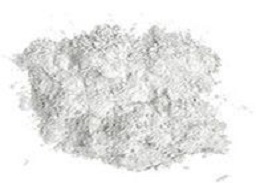
This article delves into the multifaceted applications of Nano-TiO2 in the pulping and papermaking industry, exploring its role in functional paper preparation, the wet end of papermaking, waste paper deinking, and wastewater treatment. From Japan's pioneering advancements in functional paper to Nano-TiO2's transformative impact in improving efficiency and sustainability in various papermaking processes, each section unfolds a unique aspect of the nanomaterial's contribution to the industry.
The Nanoscale Marvel: Nano-TiO2
At the forefront of nanomaterial innovation stands Nano-titanium dioxide, colloquially known as Nano-TiO2. This nanomaterial is an offspring of titanium dioxide, an oxide of titanium that occurs naturally. What sets Nano-TiO2 apart is its transformative nanoscale dimension, with particle sizes typically ranging from 1 to 100 nanometers. This diminutive size is more than a numerical distinction; it serves as the bedrock for the material's distinctive and unparalleled properties.
The reduction in particle size not only characterizes Nano-TiO2 but also ushers in a new era of enhanced reactivity and functional versatility. This transformation is attributed to the consequential increase in the surface area-to-volume ratio, a parameter that becomes increasingly significant at the nanoscale. The expanded surface area becomes a canvas for a myriad of applications across diverse fields, showcasing Nano-TiO2's adaptability and utility.
In the intricate tapestry of scientific and industrial exploration, the nanoscale dimensions of Titanium Dioxide have become a focal point of fascination and innovation. This curiosity has birthed pioneering applications in catalysis, where Nano-TiO2's heightened reactivity plays a crucial role. Furthermore, its presence extends into the realm of electronics, environmental science, and beyond, contributing to advancements that redefine technological possibilities.
As researchers delve deeper into the properties of Nano-TiO2, the material continues to captivate attention, not merely for its size but for the potential it holds in advancing technology and materials science. The nanoscale marvel of Nano-TiO2 transcends its dimensions, embodying a realm of possibilities that continues to unfold and reshape the landscape of scientific inquiry and industrial application.
Nano-TiO2 in Functional Paper Preparation
The incorporation of Nano-TiO2 in the preparation of functional paper marks a significant advancement, particularly stemming from Japan, where the innovative development of paper infused with Nano titanium oxide has opened up a realm of possibilities. This integration represents a pioneering stride in elevating the capabilities of paper products to serve beyond their traditional roles.
In the context of packaging paper and upholstery wallpaper, the introduction of Nano-TiO2 transforms these materials into powerful defenders against harmful substances. The photocatalytic marvel of Nano-TiO2 enables the absorption of formaldehyde, benzene, ammonia gas, and other pollutants, thereby acting as a proactive and protective shield. This not only enhances the durability and longevity of the functional paper but also contributes to the creation of healthier living environments by mitigating the impact of detrimental gases.
Venturing into everyday paper products like toilet paper and food wrapping paper, the inclusion of Nano titanium oxide adds a new layer of functionality – sterilization. The inherent properties of Nano-TiO2 play a pivotal role in preventing the proliferation of harmful microorganisms, ensuring a heightened level of hygiene in commonly used paper items.
This strategic incorporation not only aligns with the contemporary emphasis on health and safety but also underscores the versatility of Nano-TiO2 in enhancing the functionality of commonplace paper products. The marriage of Nano-TiO2 with functional paper represents a convergence of innovation and practicality, offering solutions that transcend traditional paper applications.
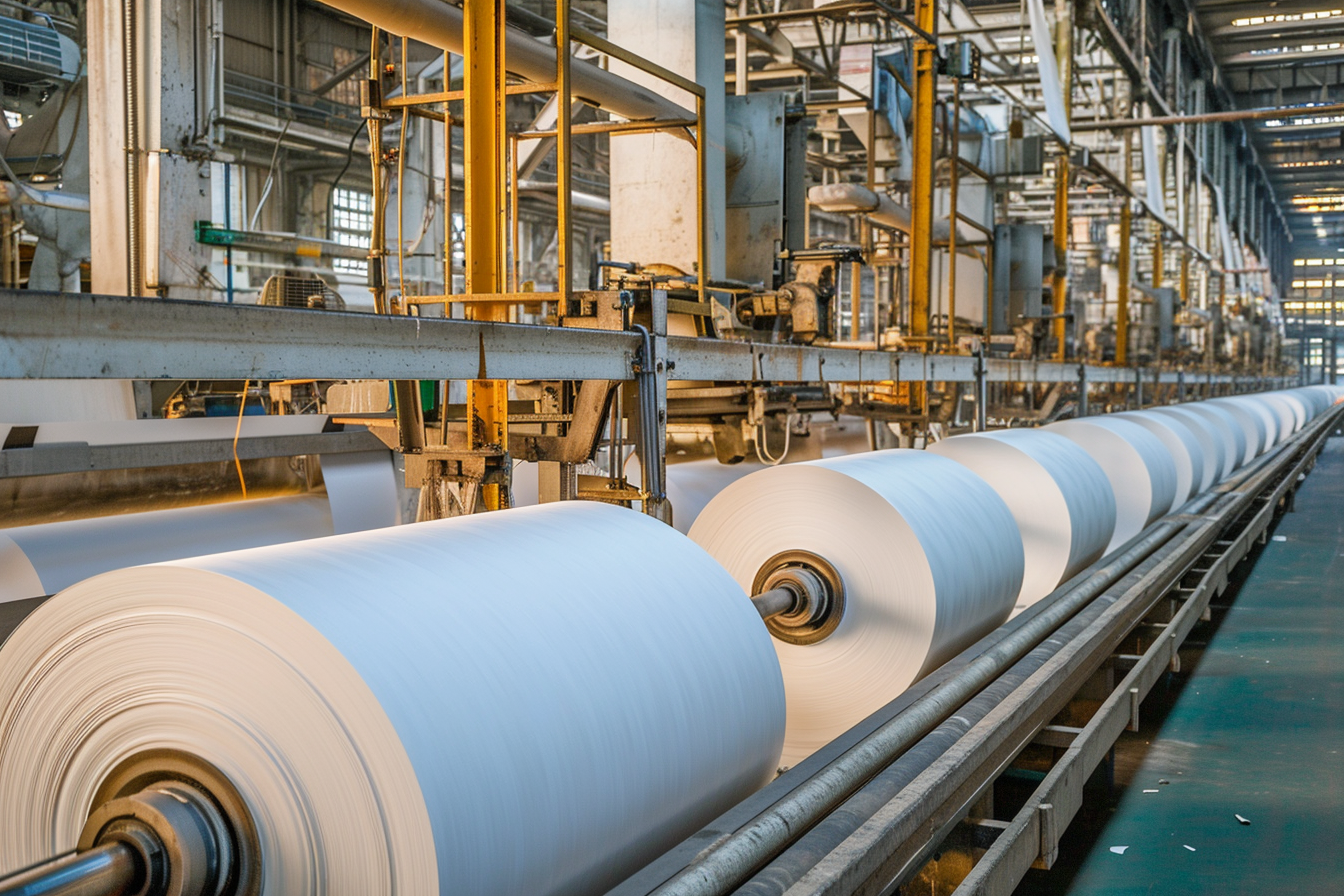
Nano-TiO2 in the Wet End of Papermaking
In the wet end of the papermaking process, where the dynamics of surface and colloid chemistry govern, the introduction of Nano titanium oxide emerges as a transformative addition. The components involved in this crucial phase are characterized by their minuscule dimensions, demanding a level of precision in manipulation that Nano-TiO2, with its nano-scale characteristics, admirably fulfills. Its presence in the wet end is crucial for paper production efficiency, going beyond just improving it incrementally.
As a retention filter, Nano-TiO2 showcases exemplary efficiency, catalyzing improved particle retention and filtration. This heightened efficiency has a cascading effect, positively impacting the overall effectiveness of the papermaking process. The meticulous interplay of Nano-TiO2 in this stage underscores its role as a key contributor to elevating the precision and reliability of paper production.
Beyond its role in enhancing efficiency, Nano-TiO2 serves as a formidable protective barrier against pollution in the wet end, particularly in the form of harmful substances present in white water. The exceptional performance of Nano-TiO2 acts as a guardian, inhibiting the pollution of white water by detrimental substances. This not only ensures a cleaner and more sustainable papermaking process but also aligns with the broader goal of environmental responsibility.
Recognizing the profound impact of such advancements, Stanford Advanced Materials acknowledges the dual significance of efficiency and environmental responsibility in the integration of Nano-TiO2 in the wet end of papermaking. This heralds a new era where precision, efficiency, and sustainability converge, shaping the future landscape of paper production with Nano-TiO2 at its forefront.
Waste Paper Deinking with Nano-TiO2
Within the intricate landscape of paper manufacturing, the influence of ink particles holds substantial significance. In the realm of recycling paper, the deinking process emerges as a pivotal step, and Nano-TiO2 stands out as a reliable ally in this intricate endeavor.
Two predominant deinking methods, flotation, and washing, are widely employed in the industry, with flotation gaining preference due to its effectiveness in removing large particle inks. In this context, Nano titanium oxide, distinguished by its positive attributes and expansive specific surface area, emerges as a highly effective participant in the flotation process.
The introduction of Nano-TiO2 during the flotation process plays a transformative role in enhancing its efficiency. This is achieved by facilitating the removal of adhesives present in waste paper pulp, a critical aspect that contributes not only to the production of recycled paper but also aligns harmoniously with sustainable practices.
The utilization of Nano-TiO2 in waste paper deinking not only underscores its effectiveness in addressing specific challenges within the papermaking process but also highlights its adaptability to diverse applications. This adaptability becomes a key asset in the industry's ongoing commitment to environmental conservation and sustainable paper production.
In essence, Nano-TiO2 becomes a catalyst for elevating the quality of recycled paper, offering a dynamic solution to the challenges posed by ink particles in the deinking process. Its positive impact extends beyond mere efficiency, encapsulating a broader narrative of environmental responsibility and the promotion of sustainable practices within the multifaceted landscape of paper manufacturing.
Wastewater Treatment in Papermaking with Nano-TiO2
In the intricate realm of pulp and paper production, the wastewater generated poses formidable environmental challenges. Comprising cooking waste liquid, washing wastewater, and paper wastewater, this effluent contains substantial quantities of lignin and various phenolic organic compounds. To address this environmental concern, Nano-TiO2 emerges as a powerful and innovative solution, particularly through the application of photocatalytic oxidation in wastewater treatment.
The groundbreaking approach of employing Nano-TiO2 in photocatalytic oxidation demonstrates remarkable efficacy in the degradation of lignin and phenolic substances present in wastewater. This not only represents a significant advancement in treating complex organic compounds but also plays a pivotal role in eliminating toxicity from the effluent. The integration of Nano titanium oxide in wastewater treatment transcends mere compliance with regulatory discharge standards; it becomes a proactive measure in reducing the environmental footprint of the papermaking industry.
In the context of wastewater treatment, Nano-TiO2 serves as a transformative agent, showcasing its potential to address the intricate challenges posed by the diverse array of organic compounds inherent in papermaking effluent. The utilization of Nano-TiO2 in this context not only aligns with the industry's commitment to meeting environmental regulations but also reflects a conscientious effort to minimize the impact of industrial processes on the ecosystem.
Stanford Advanced Materials, as a trailblazer in materials innovation, discerns the imperative of integrating sustainable practices into industrial processes. By championing the incorporation of Nano-TiO2 in wastewater treatment, the industry takes a significant step towards achieving standard discharge levels, contributing to the creation of a cleaner and healthier environment. This commitment resonates with the broader vision of Stanford Advanced Materials for environmental stewardship and the promotion of responsible industrial practices within the dynamic landscape of materials innovation.
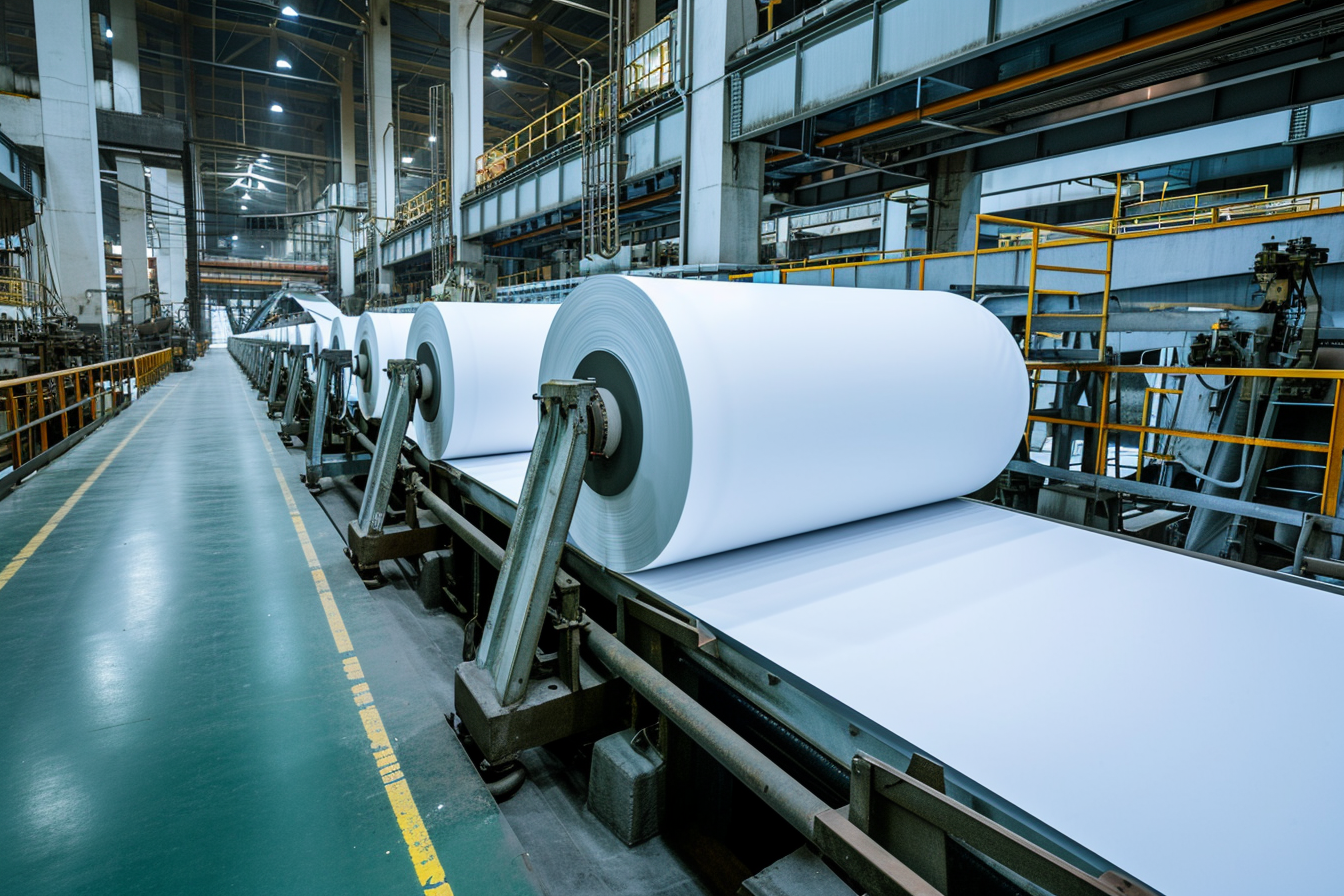
Nano-TiO2 Used In Other Industries
In addition to its applications in functional paper preparation, the wet end of papermaking, waste paper deinking, and wastewater treatment in the pulping and papermaking industry, Nano-TiO2 finds diverse uses across various industries. Its unique properties at the nanoscale contribute to its versatility in different applications. Here are some additional uses of Nano-TiO2:
Photocatalysis in Air Purification:
Nano-TiO2's photocatalytic properties extend beyond papermaking to air purification. It can be incorporated into coatings or filters to degrade air pollutants such as volatile organic compounds (VOCs) and airborne particles when exposed to light.
Self-Cleaning Surfaces:
Nano-TiO2 is utilized in the development of self-cleaning surfaces, such as glass or coatings on building facades. Its photocatalytic activity helps break down organic contaminants, maintaining a cleaner appearance over time.
UV Protection in Textiles and Sunscreens:
The ability of Nano-TiO2 to absorb and scatter UV radiation makes it valuable in textiles and sunscreens. It can be incorporated into fabric or sunscreen formulations to provide enhanced UV protection.
Antibacterial Coatings:
Nano-TiO2's antimicrobial properties make it suitable for creating antibacterial coatings on various surfaces. This is particularly beneficial in medical settings, where preventing the spread of bacteria is crucial.
Catalyst in Chemical Reactions:
Nano-TiO2 serves as a catalyst in various chemical reactions due to its increased surface area and reactivity. This has applications in catalysis for the production of chemicals and pharmaceuticals.
Energy Storage:
Nano-TiO2 is explored in energy storage applications, particularly in the development of advanced batteries and supercapacitors. Its nanoscale properties influence the material's conductivity and electrochemical performance.
Anti-Fogging Coatings:
Nano-TiO2 coatings on surfaces, such as eyeglasses or car windshields, can prevent fogging. The material's hydrophilic nature helps disperse water droplets, improving visibility.
Food Packaging:
Nano-TiO2 can be integrated into food packaging materials to enhance their antimicrobial properties, extending the shelf life of packaged products.
Photovoltaic Cells:
The unique electronic properties of Nano-TiO2 make it valuable in photovoltaic cells. It is often used as a component in dye-sensitized solar cells to improve their efficiency.
These diverse applications highlight the versatility of Nano-TiO2 across different industries, showcasing its potential to contribute to advancements in technology, health, and environmental sustainability.
Conclusion
In conclusion, Stanford Advanced Materials stands as a beacon of innovation in the pulping and papermaking industry, embracing the transformative potential of Nano-TiO2. From elevating the functionality of paper products to optimizing the wet end of papermaking, addressing waste paper deinking challenges, to revolutionizing wastewater treatment, Nano-TiO2 has proven to be a catalyst for sustainable practices. The strategic integration of Nano titanium oxide aligns with Stanford Advanced Materials' commitment to efficiency, eco-consciousness, and excellence in the pulping and papermaking landscape.
As the industry evolves, propelled by advancements such as Nano-TiO2, Stanford Advanced Materials remains at the forefront, steering towards a future where technology and sustainability converge seamlessly. Through continuous innovation and a dedication to excellence, Stanford Advanced Materials sets the stage for a papermaking industry that is not only efficient but also environmentally responsible.

